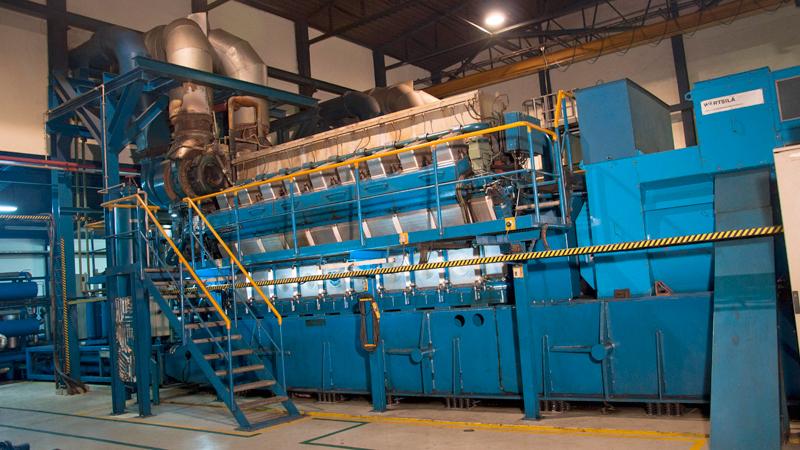
The government has been burdened with the huge task of repaying 98% of the debt for the Lakdhanavi 300 MW Combined Cycle Power plant currently operating in Kerewalapitiya, while a private company, Lanka Transformers Limited (LTL), is enjoying 24% of the total dividend income an investment analyst who preferred anonymity told the Sunday Observer. He charged that LTL had less than five percent equity and less than two percent of the debt burden.
“If, at all, LTL should be getting no more than five percent of the total dividend. However, they are enjoying five times the dividend,”.
This came to light following the publication of a report by independent research house, Verite Research, critical of the power purchasing agreement signed in January 2007, between the operating company of Lakdhanavi, West Coast Power Ltd., and the Ceylon Electricity Board.
The report, ‘A case study of public sector loss through partnership structures in power generation contracts’, still a working draft and circulated only to a handful of senior government officials, says that the government, directly through the Treasury and through government owned entities, takes on the burden and repayment risk on over 98 percent of the financing for the project, estimated to be over Rs. 22,769 million (Rs. 22.8 billion) of foreign debt and Rs. 5,984 million (Rs. 6 billion) of local debt, a total of over Rs. 28 billion.
For a near zero risk investment, the report shows that LTL is also enjoying a guaranteed price per kilowatt hour generated of more than 67% when compared to other providers of thermal electricity.
“As a result, Lakdhanavi benefits disproportionately from the high price paid for power, further through an exclusive Operational and Management (O & M) contract, while the fact that almost all the financing and shareholding is with the government has not prevented the government from posting a significant loss and being at a disadvantage through the structuring of this contract,” the research note states.
The note also points out that the characteristics of the power plant as described in the PPA signed in 2007, implies that the plant is more expensive and less efficient than the characteristics expected from the feasibility studies presented by LTL before the PPA was signed.
“An electricity unit generated by WCP has cost on average 31%, 11%, 67%, 50%, 3% and 30% more respectively from 2012 to 2016, when compared to other oil-fired thermal electricity providers. The percentage fall in 2015 was due to the excessive cost at which power was purchased from other providers as well during that year,” the report states.
As a major percentage of shares now owned by the government is scheduled to be transferred back to Lakdhanavi once the debt, guaranteed by the government, is repaid, the government will not be able to reap any benefits from the operation of the plant, the report states.
A multi-level shareholding structure of Lakdhanavi has been created to obscure significant private sector stake, the report states. LTL Holdings, with an 81.7 percent stake in Lakdhanavi, is majority owned by the CEB, having a 63% stake in LTL Holdings.
The rest of LTL Holdings is in private hands, including a company known as LTL ESOT, whose shares are tightly held by the senior management of LTL Holdings.
The CEB, through its 63 percent stake in LTL Holdings, effectively controls only 51.5% of Lakdhanavi, while LTL ESOT controls the rest through their ownership of LTL Holdings and through a direct investment of shares in Lakdhanavi.
In addition to half of the 24% dividend filtering down to the senior managers of LTL Holdings, all operational and management fees are paid directly to the LTL management.
According to the PPA, these O and M charges are US$26.23 per kilowatt for the year, that is US$7.8 million per year. Comparatively, O and M charges for other similar PPA’s signed by the CEB are less than US$3.8 per kilowatt for the year, seven times less.
The report allocating risks based on the share transfer, financing and distribution agreements have concluded that the Government, which currently holds 50 percent ownership, has guaranteed to at least 80 percent of direct and indirect debt financing, whereas Lakdhanavi only carries the risk of foregoing equity investment from their own funds.
“It must be noted that in the event that WCP fails to obtain an adequate return for these obligations, the Government has no choice but to settle the debt,” the report states.
Further, the Government will not have any financial returns on their stake as dividend income, after settling the debts and the shares are transferred back to Lakdhanavi.
